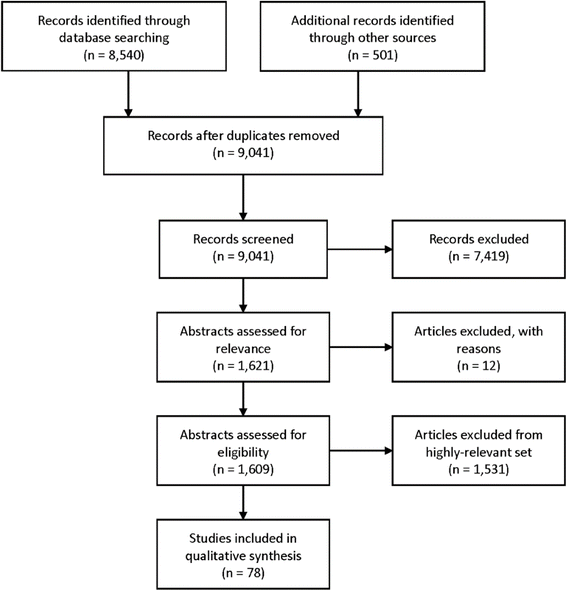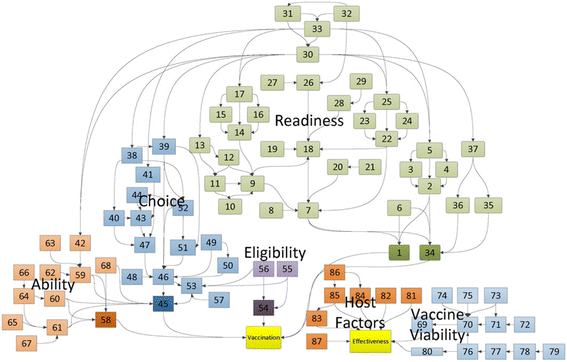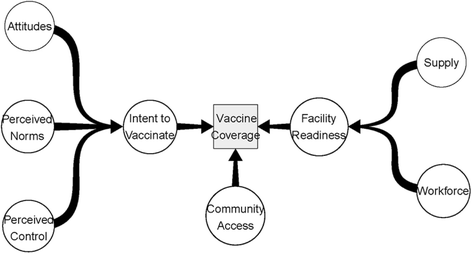Determinants of effective vaccine coverage in low and middle-income countries: a systematic review and interpretive synthesis
- PMID: 28950899
- PMCID: PMC5615444
- DOI: 10.1186/s12913-017-2626-0
Determinants of effective vaccine coverage in low and middle-income countries: a systematic review and interpretive synthesis
Abstract
Background: Many children in low and middle-income countries remain unvaccinated, and vaccines do not always produce immunity. Extensive research has sought to understand why, but most studies have been limited in breadth and depth. This study documents existing evidence on determinants of vaccination and immunization and presents a conceptual framework of determinants.
Methods: We used systematic review, content analysis, thematic analysis and interpretive synthesis to document and analyze the existing evidence on determinants of childhood vaccination and immunization.
Results: We documented 1609 articles, including content analysis of 78 articles. Three major thematic models were described in the context of one another. Interpretive synthesis identified similarities and differences between studies, resulting in a conceptual framework with three principal vaccine utilization determinants: 1) Intent to Vaccinate, 2) Community Access and 3) Health Facility Readiness.
Conclusion: This study presents the most comprehensive systematic review of vaccine determinants to date. The conceptual framework represents a synthesis of multiple existing frameworks, is applicable in low and middle-income countries, and is quantitatively testable. Future researchers can use these results to develop competing conceptual frameworks, or to analyze data in a theoretically-grounded way. This review enables better research in the future, further understanding of immunization determinants, and greater progress against vaccine preventable diseases around the world.
Conflict of interest statement
Ethics approval and consent to participate
Not applicable
Consent for publication
Not applicable
Competing interests
The authors declare that they have no competing interests.
Publisher’s Note
Springer Nature remains neutral with regard to jurisdictional claims in published maps and institutional affiliations.
Figures




References
-
- World Health Organization, UNICEF, World Bank. State of the world’s vaccines and immunization [Internet]. 3rd ed. Geneva, Switzerland: WHO; 2009. Available from: http://apps.who.int/iris/bitstream/10665/63027/1/WHO_GPV_96.04.pdf
-
- Jha P, Chaloupka FJ, Moore J, Gajalakshmi V, Gupta PC, Peck R, et al. Disease control priorities in developing countries. 2nd ed. New York: Oxford University Press; 2006.
-
- Abubakar II, Tillmann T, Banerjee A. Global, regional, and national age-sex specific all-cause and cause-specific mortality for 240 causes of death, 1990-2013: a systematic analysis for the global burden of disease study 2013. Lancet. 2015;385(9963):117–171. doi: 10.1016/S0140-6736(14)61682-2. - DOI - PMC - PubMed
Publication types
MeSH terms
LinkOut - more resources
Full Text Sources
Other Literature Sources
Medical

